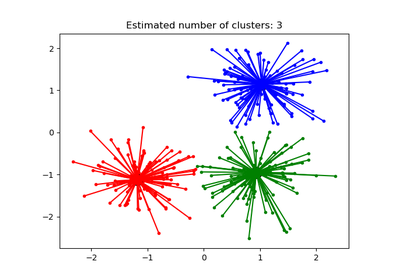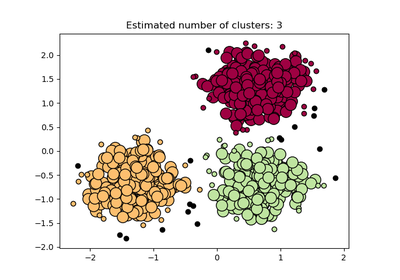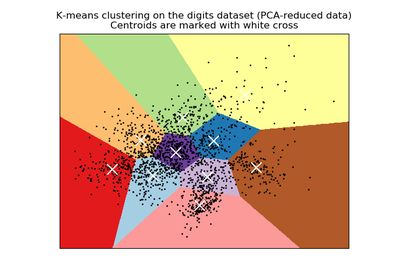sklearn.metrics.homogeneity_score¶
-
sklearn.metrics.homogeneity_score(labels_true, labels_pred)[source]¶ Homogeneity metric of a cluster labeling given a ground truth.
A clustering result satisfies homogeneity if all of its clusters contain only data points which are members of a single class.
This metric is independent of the absolute values of the labels: a permutation of the class or cluster label values won’t change the score value in any way.
This metric is not symmetric: switching
label_truewithlabel_predwill return thecompleteness_scorewhich will be different in general.Read more in the User Guide.
Parameters: labels_true : int array, shape = [n_samples]
ground truth class labels to be used as a reference
labels_pred : array, shape = [n_samples]
cluster labels to evaluate
Returns: homogeneity : float
score between 0.0 and 1.0. 1.0 stands for perfectly homogeneous labeling
See also
References
[R218] Andrew Rosenberg and Julia Hirschberg, 2007. V-Measure: A conditional entropy-based external cluster evaluation measure Examples
Perfect labelings are homogeneous:
>>> from sklearn.metrics.cluster import homogeneity_score >>> homogeneity_score([0, 0, 1, 1], [1, 1, 0, 0]) 1.0
Non-perfect labelings that further split classes into more clusters can be perfectly homogeneous:
>>> print("%.6f" % homogeneity_score([0, 0, 1, 1], [0, 0, 1, 2])) ... 1.0... >>> print("%.6f" % homogeneity_score([0, 0, 1, 1], [0, 1, 2, 3])) ... 1.0...
Clusters that include samples from different classes do not make for an homogeneous labeling:
>>> print("%.6f" % homogeneity_score([0, 0, 1, 1], [0, 1, 0, 1])) ... 0.0... >>> print("%.6f" % homogeneity_score([0, 0, 1, 1], [0, 0, 0, 0])) ... 0.0...





